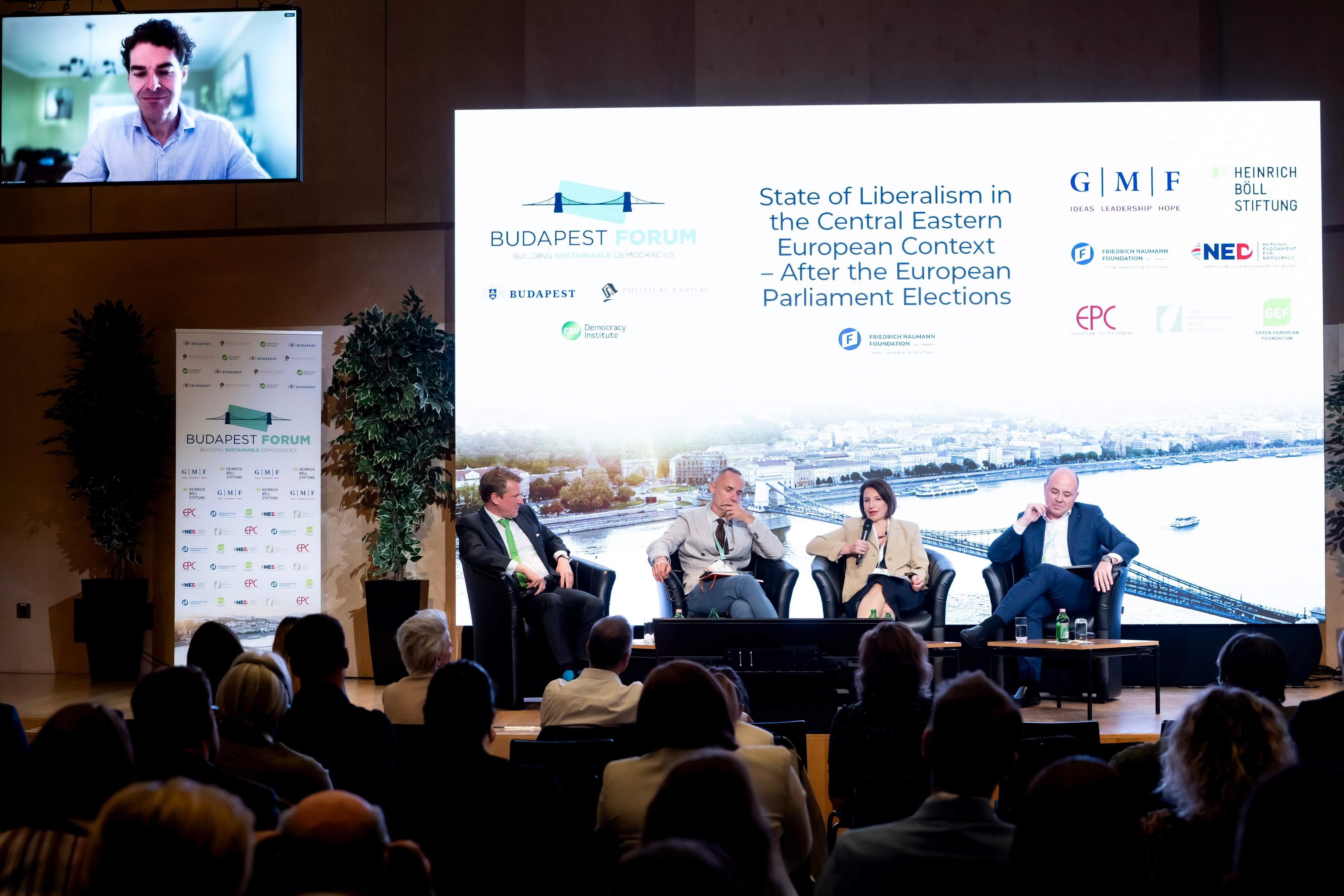State of Liberalism in the Central Eastern European Context – After the European Parliament Elections
2024-09-26
Participants:
- Alberto Alemanno – Professor of EU law, HEC Paris; Europe’s Futures Fellow, IWM Vienna; Founder, The Good Lobby and the European Journal of Risk Regulation (online)
- Alexandru Muraru – Member of the Chamber of Deputies for the National Liberal Party, Romania
- Zsuzsanna Szelényi – Director, Leadership Academy (DILA), Central European University Democracy Institute; Former Member of the Parliament, Hungary
- Tomáš Valášek – Member of the Parliament of National Council, Slovak Republic
- Moderator: Lars-André Richter – Director, Friedrich Naumann Foundation, Prague

Main takeaway:
- Evaluation of the EU elections
- Hungary: Since Viktor Orbán’s Fidesz left the European People’s Party, the party was in a difficult situation in the European Parliament until the EU elections. While Fidesz performed worse in terms of vote shares than any previous European Parliament election, it still won more than half of the 21 seats (11). The established opposition parties almost disappeared, and a new challenger emerged, the TISZA party, with a huge support base.
- Romania: The mainstream parties remained in a dominant position by winning 25 seats out of the 33 while the extremists won the rest. The fact that the local and EU elections were held on the same day helped to protect democracy from the extremists. These results have an immense impact on the upcoming parliamentary and presidential elections.
- Slovakia: The EU elections saw a high turnout, culminating in a victory for the liberal Progressive Slovakia, which many viewed as a response to the party’s defeat in the Slovak presidential election. The assassination attempt on SMER-SD leader Robert Fico, while initially a cause for concern, rallied public support around Progressive Slovakia and ultimately played a key role in its victory.
- The EU elections reflect 27 parallel national elections, even more so than in the past. National parties do not necessarily refer to their affiliated European political groups, as they focus primarily on domestic issues and win voters with their domestic narratives. Domestic messages continue to dominate European elections.
- There has been no breakthrough of the far right, but the gradual shift to the right continues in the European Parliament. The radical and fringe parties have made gains. As a result, the new European Commission, led by Ursula von der Leyen, will be more pragmatic and reactive than proactive, as it should be.
- The Kremlin most likely tried to influence the EU elections through social media campaigns. The Russian embassy in Slovakia was one of the most active in the EU. But even without Russian influence, SMER-SD would have done well in the EU elections. In the end, the party came second.
- The trend in Slovakia is that people rely more and more on social media than traditional media.
- There is a leadership vacuum at the European level, which creates opportunities for leaders like Viktor Orbán. He does not want to undermine the EU. Instead, he wants to reform it from within. He has spoken on behalf of other countries, which shows that he does not feel so isolated.
- The challenging and polarizing issues in the EU are the Green Deal, migration, Ukraine, and the US elections.
- Different parties focus on different policies and shape their messages and narratives accordingly. For example, right-wing parties focus more on migration, while left-wing parties talk more about socio-economic and socio-cultural issues.
- Magyar's Tisza Party is essentially an anti-establishment party. Péter Magyar was a Fidesz insider, and the fact that he left Fidesz made him a hero to some voters. The ideology of his party is unclear. However, this is a general trend in the EU, as parties focus less and less on ideology, which is also worrying because it should be their anchor.
Copyright 2026. Political Capital Policy Research and Consulting Institute, all rights reserved.

